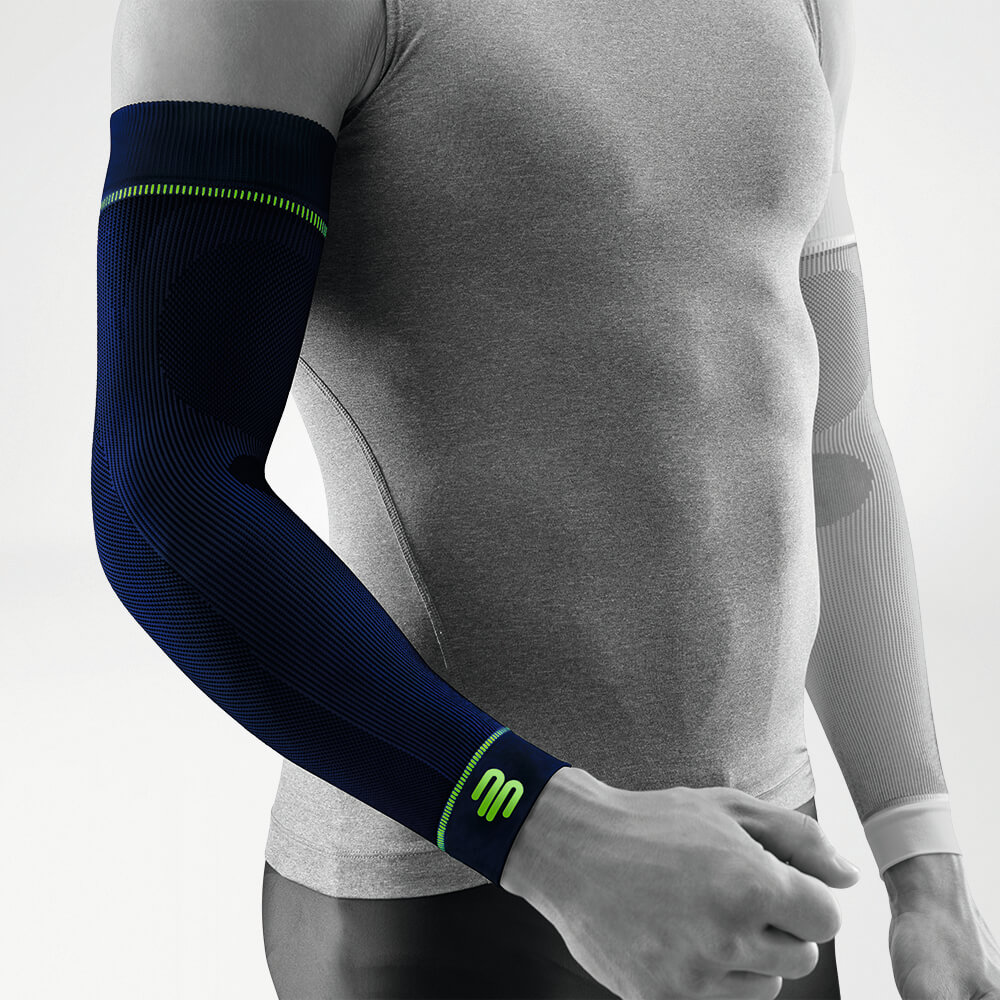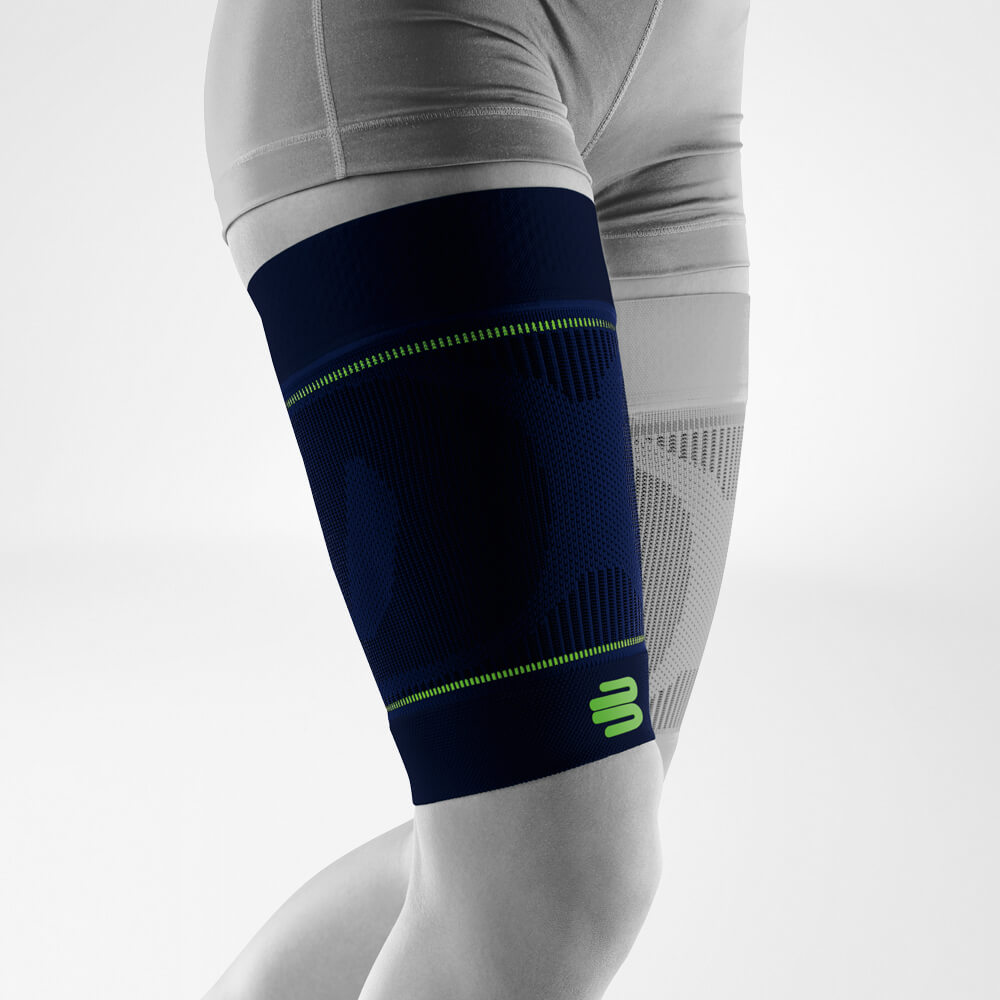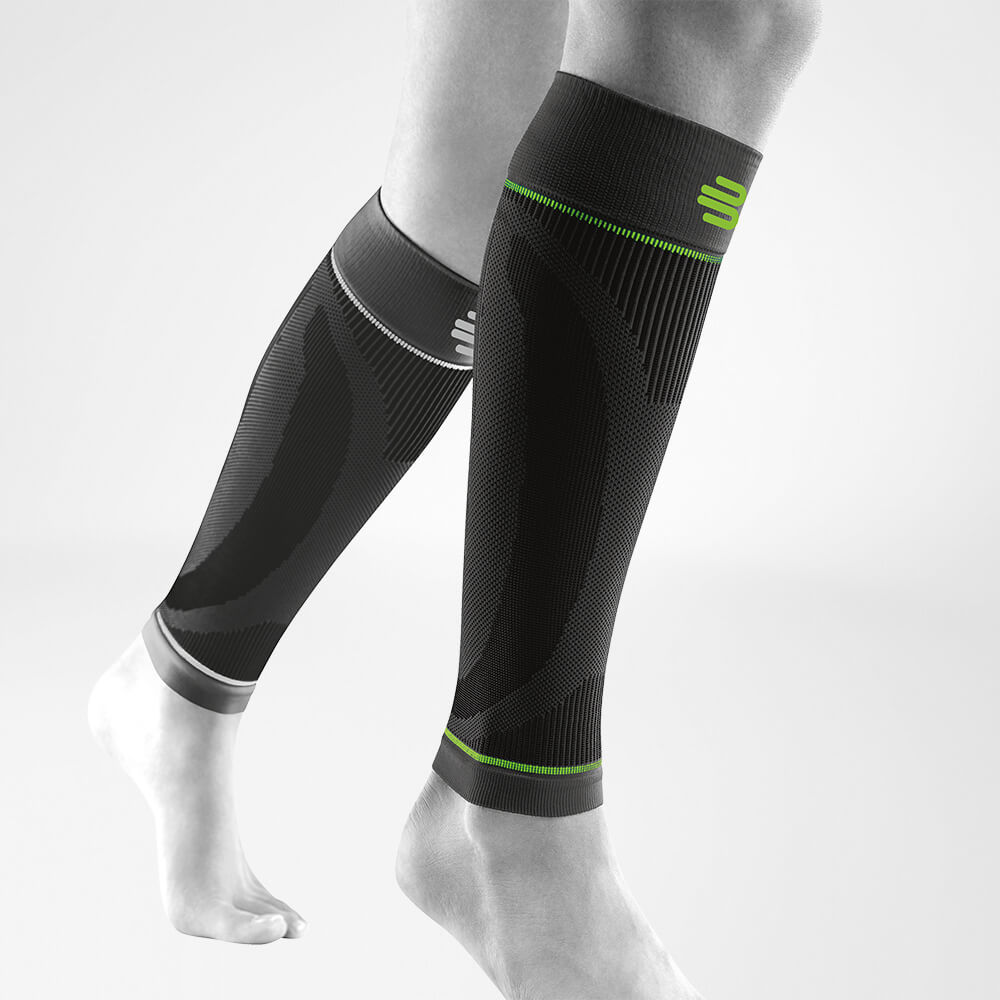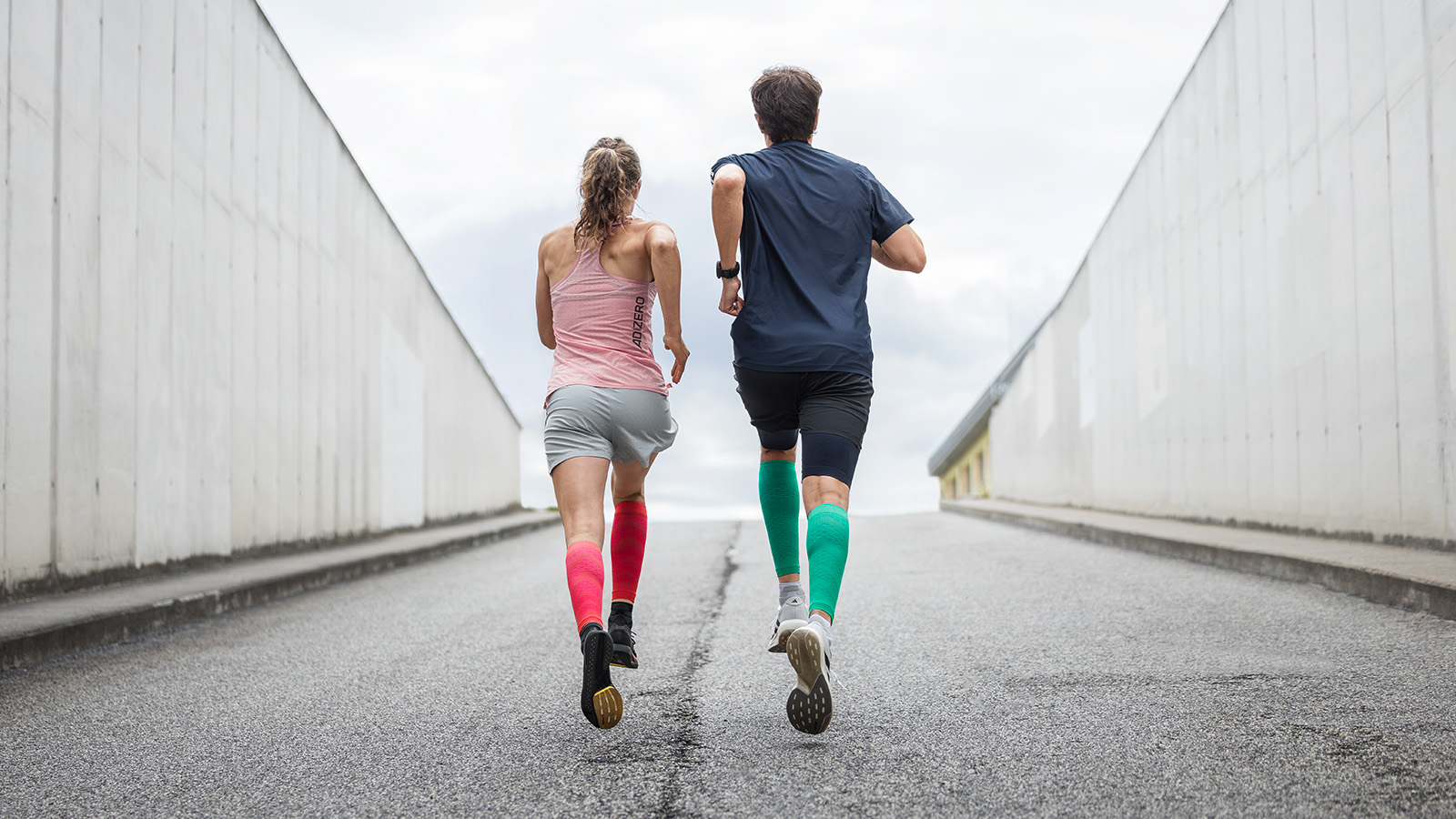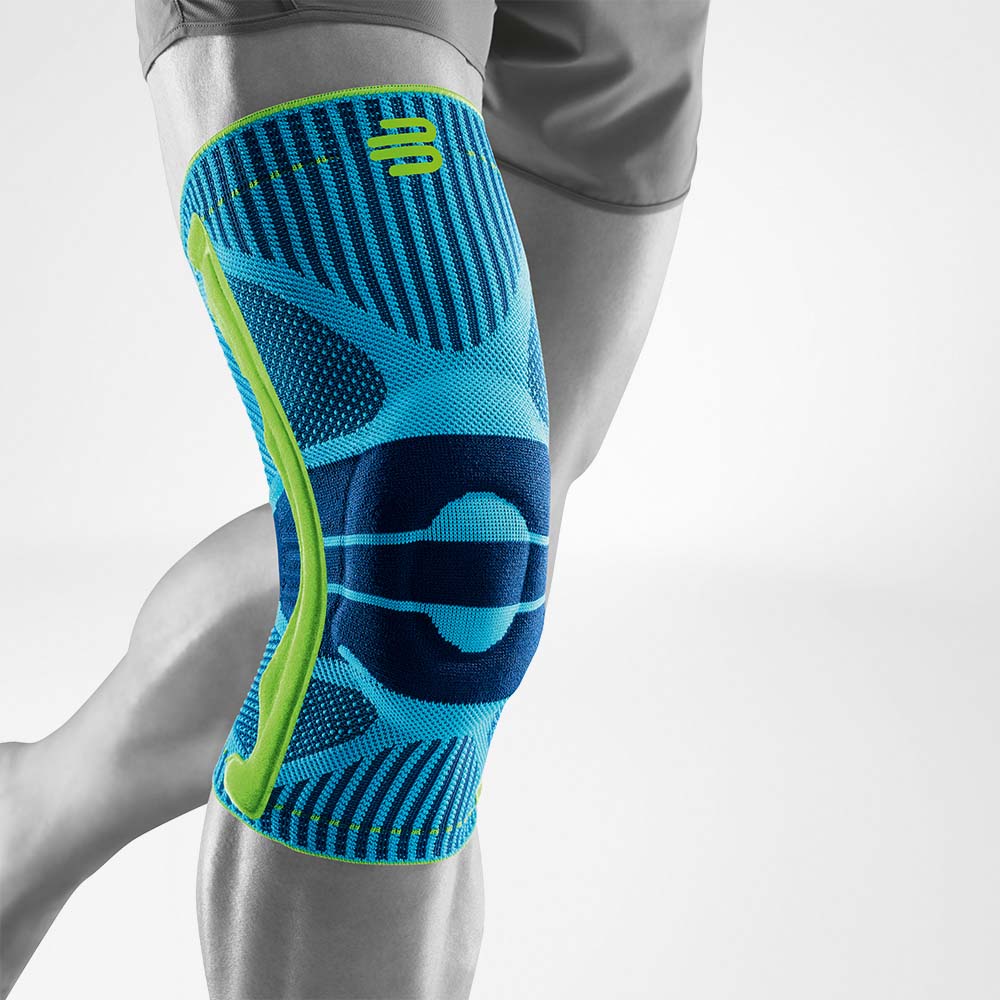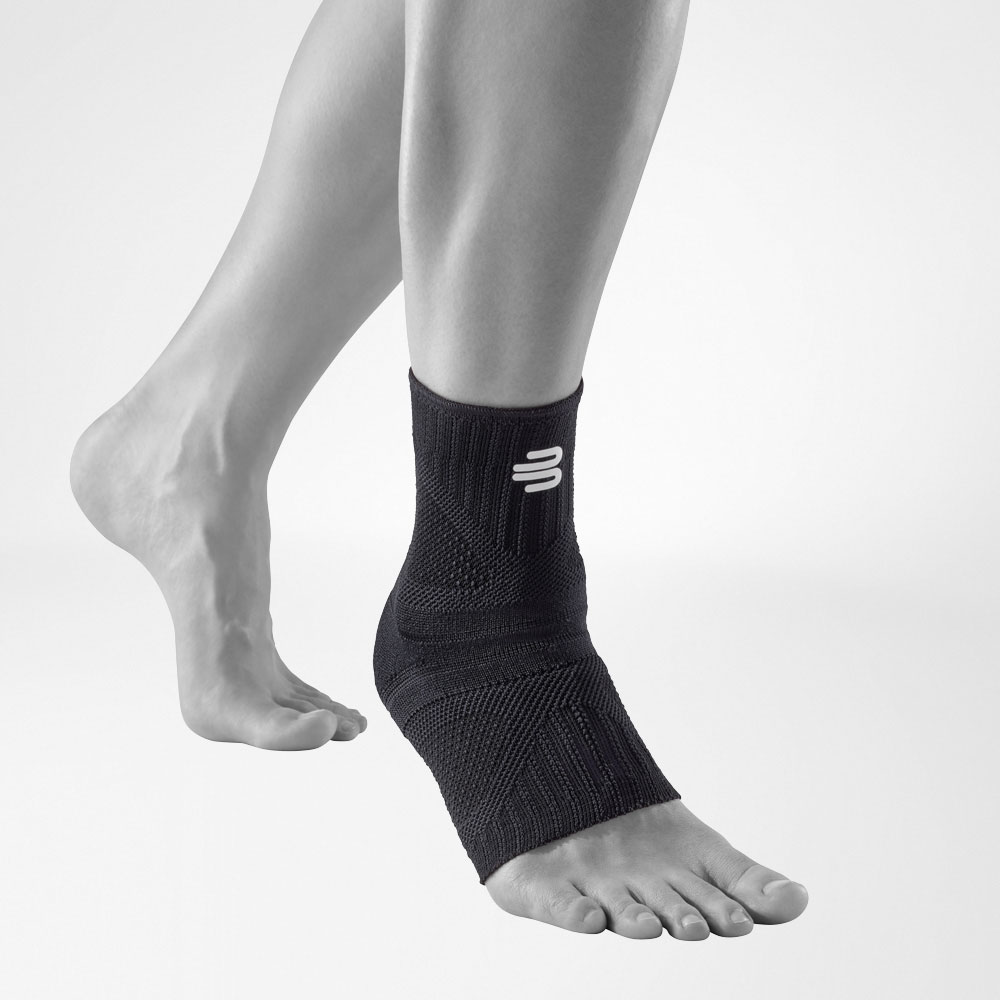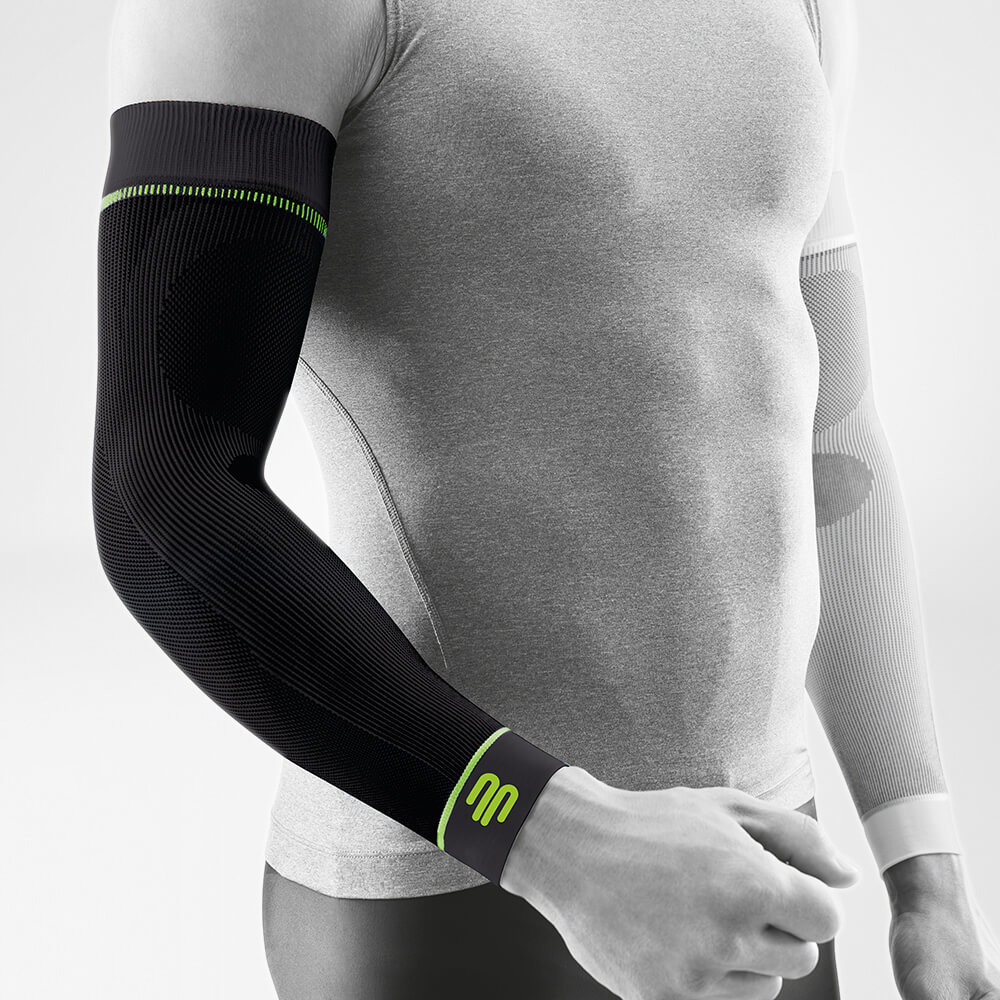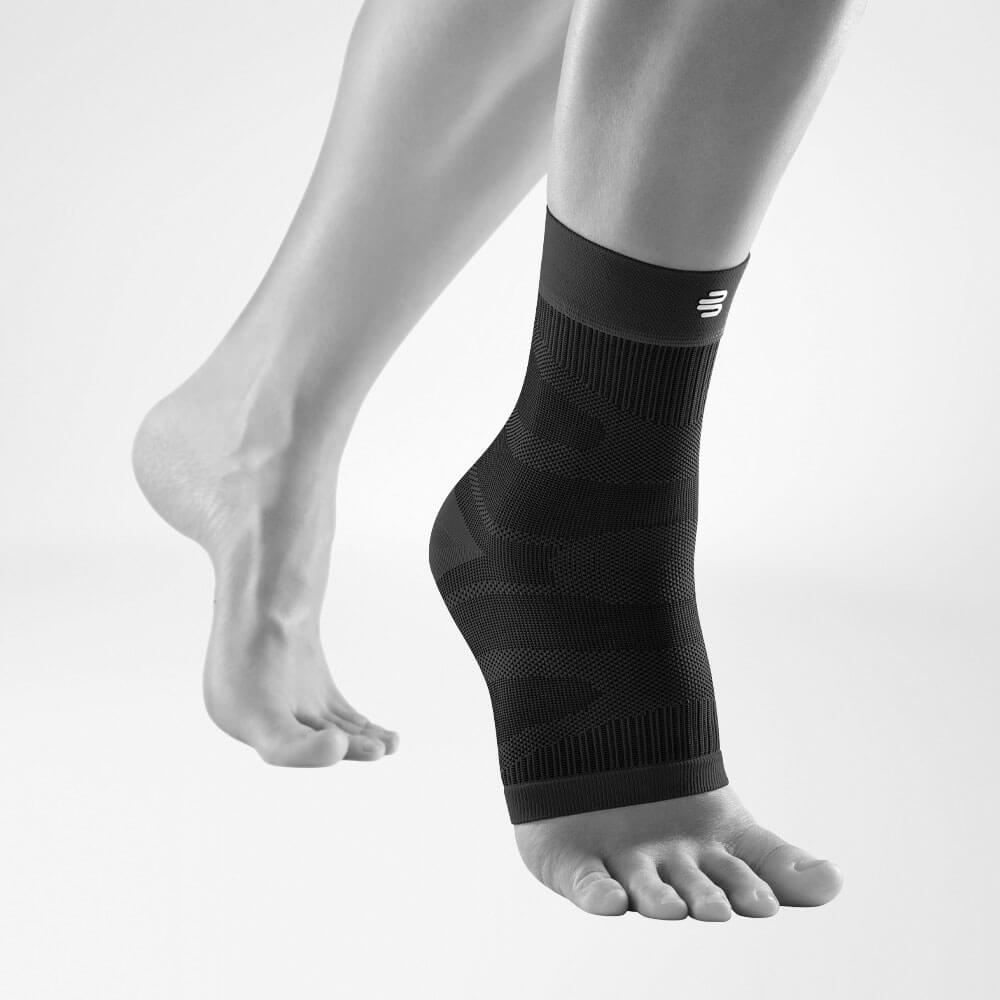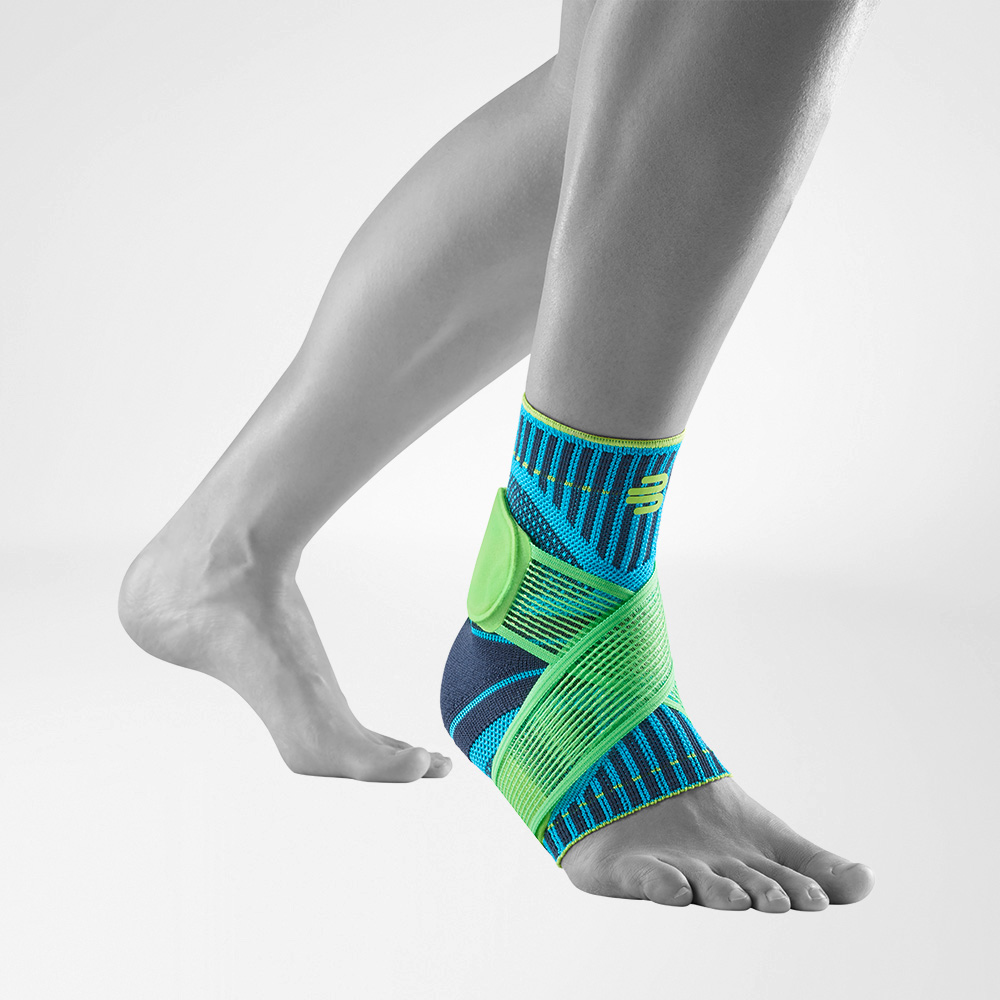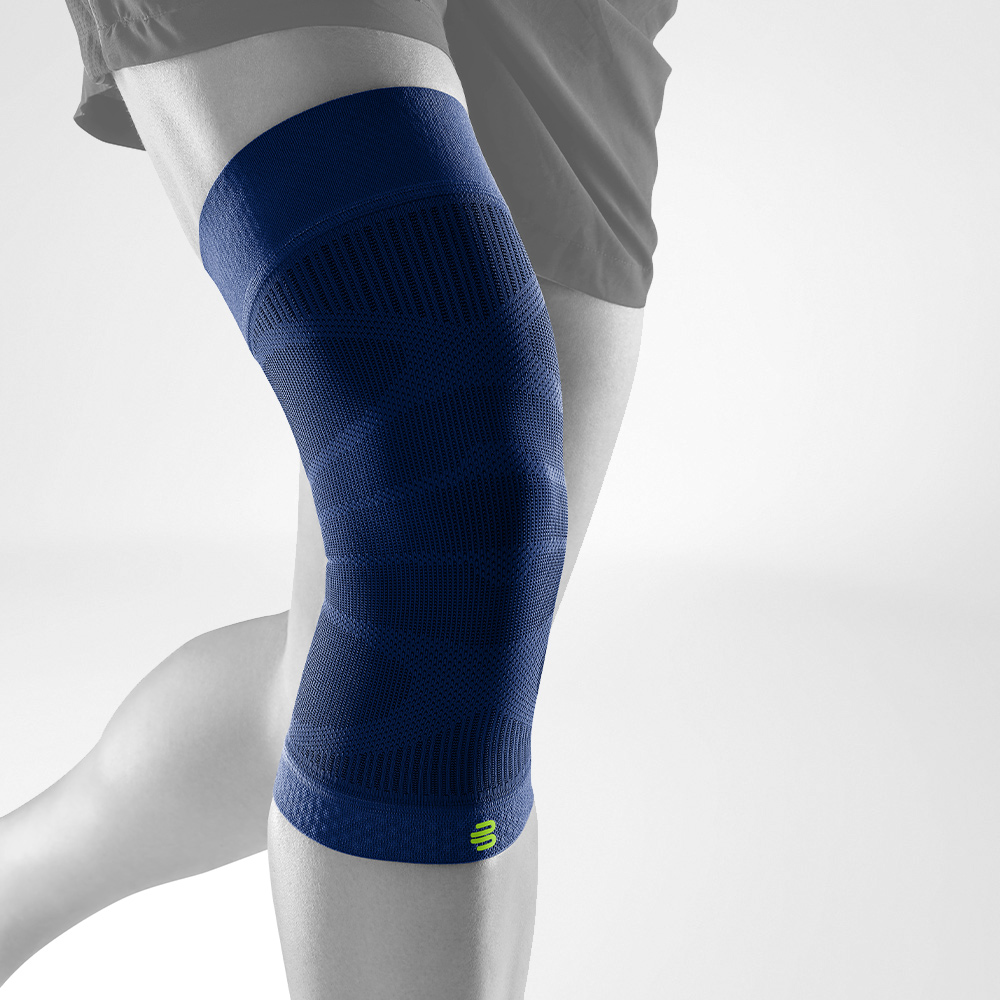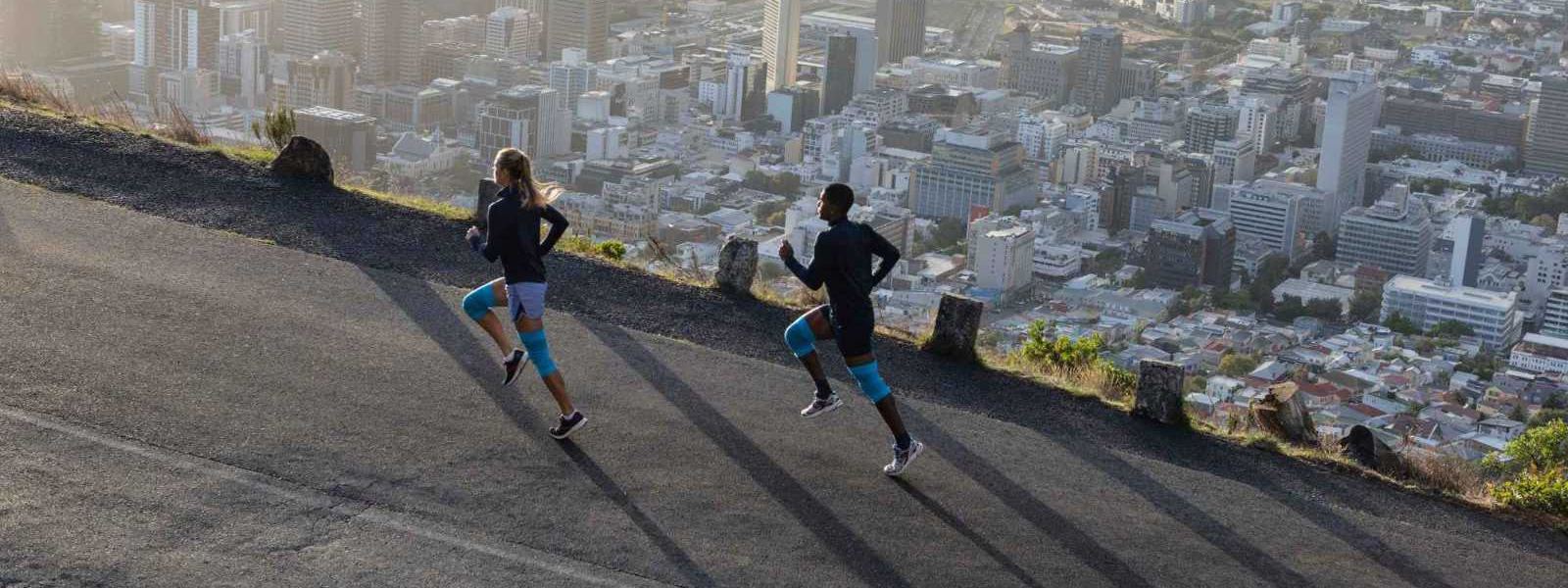
Know-how
Compression in sports – everything you need to know
Part 3: The Practice of Compression in Sports with Olympian Hendrik Pfeiffer
200 running kilometers and 13 training sessions per week? For many of us hardly imaginable. For Hendrik Pfeiffer it’s everyday life. The Düsseldorf native is a professional runner, German marathon champion, Olympian, and co-host of the podcast “Einer rennt Einer hinterher”. His current marathon best time: 2:07:14 hours. How does an athlete at this level manage to keep his body fit and capable despite this enormous strain? Hendrik relies on compression.
In the first part of our series “Compression in Sports”, Dr. Casper Grim explained the positive effects and background. Afterwards, product manager Moritz Rahn took us through the manufacturing process and showed what matters in development. Now we want to move on to practice and hear from Hendrik himself when and how he uses compression in training and in his competitions.
Questions and Table of Contents
- When and how did you first come into contact with compression in sports?
- Many are skeptical at first or don’t see the benefit of compression wear in sports – can you relate?
- What are your areas of application today (training, competition, recovery)?
- What about subjective feeling versus actual effect does it also give you a mental push?
- How do you choose the right compression products?
- What are your tips for beginners, what should they pay special attention to?
- What is your absolute favorite? And what would you recommend for starters?
- When and how often do you wear compression products?
- Do you have specific rituals or routines in dealing with compression gear?
- Do you think everyday athletes should approach it differently?
Personal experiences with compression

When and how did you first come into contact with compression?
The first time I saw the active use of compression in sports was at fun runs, since compression socks are very common in recreational sports. As a teenager, I also got myself such socks, but they were not of particularly high quality and were more of a “style accessory”. As I became more professional over the following years and established myself as a runner in the German national team, I came into contact with Bauerfeind products through the Sports Aid program. At first it was mainly about reducing swelling in my legs during the now frequent travels with the help of compression. Quite quickly, however, I also looked at compression products for competition, which then became a permanent part of my routine.
Many people are initially afraid or see no benefit in compression clothing in sports, can you understand that?
The product quality of compression clothing in sports varies greatly. Similar to me as a teenager, it is possible that you buy a product that has no significant effect, so you might turn away from it again. That’s why it is particularly advisable to look at how and which of these products are used in elite sports, because there it is primarily about performance and the chances of finding a suitable product are higher. I also only discovered the Bauerfeind products in the context of elite sports through the Sports Aid program. It’s advantageous that the risk of using compression clothing in competition is low. In the worst case, it just doesn’t have the desired effect. That could be very different with, for example, the wrong shoe.
“The combination of upper leg sleeves and arm sleeves has a great effect and significantly improves my running experience.”
What are your areas of application today?
I use Bauerfeind Sports compression products in four areas: competition, training, regeneration, and travel. For me as a professional runner, all four areas are enormously important. In competition, the arm sleeves and upper leg sleeves help me enormously, as they provide a better running feel and allow me to maintain a clean running style to the finish line. That can mean valuable seconds in the end. It’s similar in training: in high-intensity sessions I use the products just like in competition and can train overall at a higher level with less fatigue. The running socks help me in all areas, as they prevent blisters on the feet and are airy. Compression socks play an important role for me in regeneration, as well as on my frequent trips, because they support blood circulation and reduce swelling in my legs. This way, the high training load has less of an impact and it’s another building block to further optimize my training routine.
What about the subjective feeling and the actual effect, does the feeling also push you mentally?
I am known as a runner for listening very closely to my body and working less with scientific tests and analyses. With this conscious approach, I’ve done well so far. Not to be underestimated is also the mental component, which plays a particularly big role in marathon running. When you believe in a product or a strategy, it helps enormously. My body feeling has never deceived me so far, and over many years in elite sports this inner compass has given me the basis to sense whether a new product works or not.
Tips and recommendations
How do you choose the right compression products?
Bauerfeind Sports provides detailed size information in the online shop. It’s worth looking closely. In particular, compression socks should fit tightly, as should arm and leg sleeves, so that they don’t slip in competition at high speeds. It makes a lot of sense to invest some effort and, if in doubt, try out several variants. For me as a professional athlete, achieving my best performance is like a puzzle in which the details must fit.
What are your tips for beginners, what should they pay particular attention to?
The decisive factor is that you feel comfortable with the products and that they fit tightly. Compression can only have its effect if it optimally encloses the muscles. It is also important that the material is breathable.
What is your absolute favorite? And what would you recommend to others as a start?
My favorites when running are the upper leg sleeves and the arm sleeves, which together have a great effect and significantly improve my running feel. This combination could also work well for beginners.
Everyday life and routines
When and how often do you wear compression products?
I wear the products in almost every fast tempo session and in competitions when it comes to peak performance. In regeneration, I use my compression socks, and they also help me on long car journeys or flights to improve blood circulation in my legs.
Do you have certain rituals or routines in handling compression items?
I only put on the sleeves after the warm-up program, so that I don’t get used to the feeling during warm-up runs. With this mental trick I can improve my feeling on the start line, as it gives me a kind of “kick” and I’m fully present at the start.
Hendrik’s Top 5 Tips on Compression in Sports:
- Think holistically: in running, it’s not just the legs that work. That’s why the arm sleeves also play an important role for me.
- Listen to the feeling: the wearing comfort in sports must be pleasant.
- Invest energy in product research and test if in doubt.
- Identify and compare weak points: does it feel better with compression?
- Always stay open to innovation and new approaches.
Thank you very much Hendrik for your time and insights. All the best to you and may your legs always stay fast!

